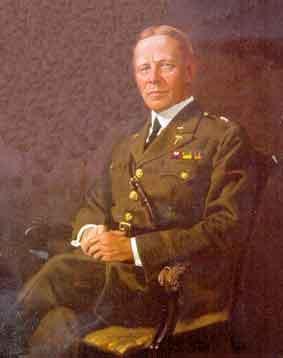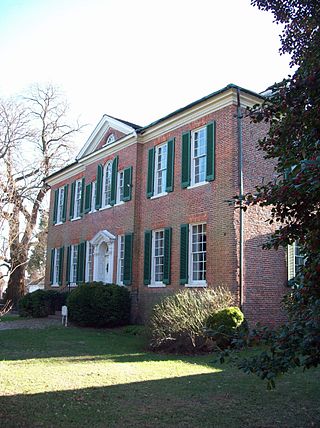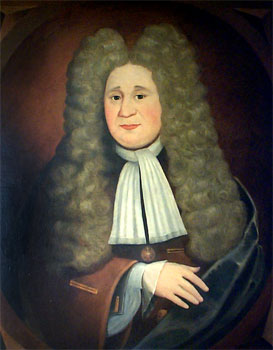
Darnall ward—which includes the districts of Attercliffe, Carbrook, Darnall, Tinsley, and parts of Handsworth—is one of the 28 electoral wards in City of Sheffield, South Yorkshire, England. It is located in the eastern part of the city and covers an area of 17.4 km2. The population of this ward in 2011 was 23,489 people in 8,809 households. It is one of the wards that made up the Sheffield Attercliffe constituency, now the Sheffield South East constituency.

Sheffield Attercliffe was a parliamentary constituency in the City of Sheffield. It was created at the 1885 general election and abolished at the 2010 general election, when it was replaced by a new Sheffield South East constituency.

Darnall railway station is on the Sheffield to Lincoln Line and was built in 1849 to serve Darnall, a community about 3 miles (5 km) from the centre of Sheffield, South Yorkshire, England, and which later became a suburb of the city.

Darnall DMU Depot was a traction maintenance depot in Darnall, Sheffield, England. It was built by the London and North Eastern Railway to serve the Sheffield area, passenger trains originating or changing at Sheffield Victoria and goods and pilot workings. The shed was built adjacent to the main line immediately west of Darnall station. British Railways initially allocated the shed code 39B to Darnall, and later 41A, both within the Eastern Region code sequence.
Darnall Hall was a large hall that was constructed in 1723 in Darnall, Sheffield, England. The house was constructed by Samuel Staniforth (1698-1748) as a residence for himself and his wife Alethea Macro, daughter of Thomas Macro of Bury St Edmunds.

The Carl R. Darnall Army Medical Center is a United States Department of Defense medical facility at Fort Cavazos, Texas. It provides medical care to servicemembers and their families, along with veterans and their dependents, in and around the largest U.S. military installation in the world. Named after inventor of water chlorination Brigadier General Carl Rogers Darnall, MD., the core of the medical center is a state of the art 947,000-square-foot hospital. The facility opened in 2016, and includes a full primary care and emergency medical facility, including a level III trauma center, and specialized care in obstetrics and gynaecology, orthopedics, and behavioral health. The hospital provides treatment to nearly 3,000 patients daily. The medical center is one of the largest in the Military Health System, comprising more than 105 buildings in addition to the main facility, spread over Fort Cavazos, three local communities, and a clinic at the Red River Army Depot in Bowie County, Texas, outside of Texarkana. The medical center and its outlying facilities are staffed nearly entirely by uniformed servicemembers of the U.S. Army, however in 2019, the administrative control of the facility was shifted from United States Army Medical Command to the Defense Health Agency, an integrated joint Department of Defense combat support agency. All patients of the facility are insured and billed through Tricare, the health insurance system of the DoD. The medical center is led by Colonel Richard G. Malish.
Redwood Village is a neighborhood of the Mid-City region of San Diego, California. Formerly known as Darnall, on June 7, 2007, residents voted to change the name of the neighborhood to Redwood Village. Redwood Village is a mostly residential neighborhood, with the exception of the area South of University avenue which is home to the University Square Shopping Center.

Darnall's Chance, also known as Buck House, Buck-Wardrop House, or James Wardrop House, is a historic home located at 14800 Governor Oden Bowie Drive, in Upper Marlboro, Prince George's County, Maryland, United States.

Brigadier General Carl Rogers Darnall was a United States Army chemist and surgeon credited with originating the technique of liquid chlorination of drinking water. Chlorination has been an exceedingly important innovation in public health, saving innumerable lives.

His Lordship's Kindness, also known as Poplar Hill, is a historic plantation estate on Woodyard Road east of Clinton, Maryland. It was built in the 1780s for Prince George's County planter Robert Darnall. The five-part Georgian mansion retains a number of subsidiary buildings including a slave's hospital and a dovecote. The property is now operated as a museum by a local nonprofit preservation group. It was designated a National Historic Landmark in 1970.

The A6102 is a 4 digit A road in South Yorkshire, England.

Darnall New Ground at High Hazels Park, Darnall, Sheffield was a first-class cricket venue in the 1820s. It was the home ground of Sheffield Cricket Club.

Darnall is a suburb of eastern Sheffield, South Yorkshire, England. Darnall is approximately 3 miles (5 km) east-north-east of Sheffield city centre.
Darnall Old Ground at Darnall, Sheffield was a first-class cricket venue in the 1820s. It was the home ground of Sheffield Cricket Club which played first-class matches there before relocating to Darnall New Ground.

Colonel Henry Darnall was a planter, military officer and politician in colonial Maryland. Darnall served as the Proprietary Agent in the colony for Lord Baltimore; he also briefly served as Deputy Governor of Maryland. During the Protestant Revolution of 1689, his proprietarial army was defeated by the Protestant army of John Coode, and he was stripped of his numerous colonial offices as a result. Darnall died in 1711, leaving the bulk of his substantial estates to his son, Henry Darnall II.

Philip Darnall, was an English barrister. His son Henry Darnall, (1645–1711), emigrated to North America, where he became the Proprietary Agent of George Calvert, the first Lord Baltimore, (1579–1632), and George Calvert's son, Cecilius Calvert, second Lord Baltimore, (1605–1675) and the founder of Maryland.

Housing at Georgetown University consists of 13 residence halls at the main campus and a law center campus. Housing on Georgetown's main campus is divided between "halls," usually more traditional dormitories, and "villages", usually less traditional apartment complexes. In addition, Georgetown operates many townhouses in the Georgetown neighborhood, usually for second, third, and fourth-year students.

The Darnall Works is a former steelworks in the Darnall area of Sheffield in England. The only remaining large complex of crucible furnaces, the works opened in the 1835 and were frequently extended and adapted until the late 20th century. Some of the structures at the works are listed buildings, at Grade II* and Grade II, and part of the site is a Scheduled Ancient Monument.
Darnall Stadium was a greyhound racing stadium in Darnall, east Sheffield, South Yorkshire.
Henry Darnall II (1682-1759) was a wealthy Roman Catholic planter in Colonial Maryland. He was the son of the politician and planter Henry Darnall, who was the Proprietary Agent of Charles Calvert, 3rd Baron Baltimore, and served for a time as Deputy Governor of the Province. During the Protestant Revolution of 1689, Henry Darnall I's proprietarial army was defeated by the Puritan army of Colonel John Coode, and he was stripped of his numerous colonial offices. After his father's death, Henry Darnall II did not enjoy political power in Maryland, but he remained wealthy thanks to his family's extensive estates. He married twice, fathering many children. His eldest son Henry Darnall III (c1702-c1783) inherited the bulk of what remained of his estates, and one of his grandchildren, Daniel Carroll, would become one of the Founding Fathers of the United States. A small portion of Darnall's former property, now called Darnall's Chance, can still be visited today.















